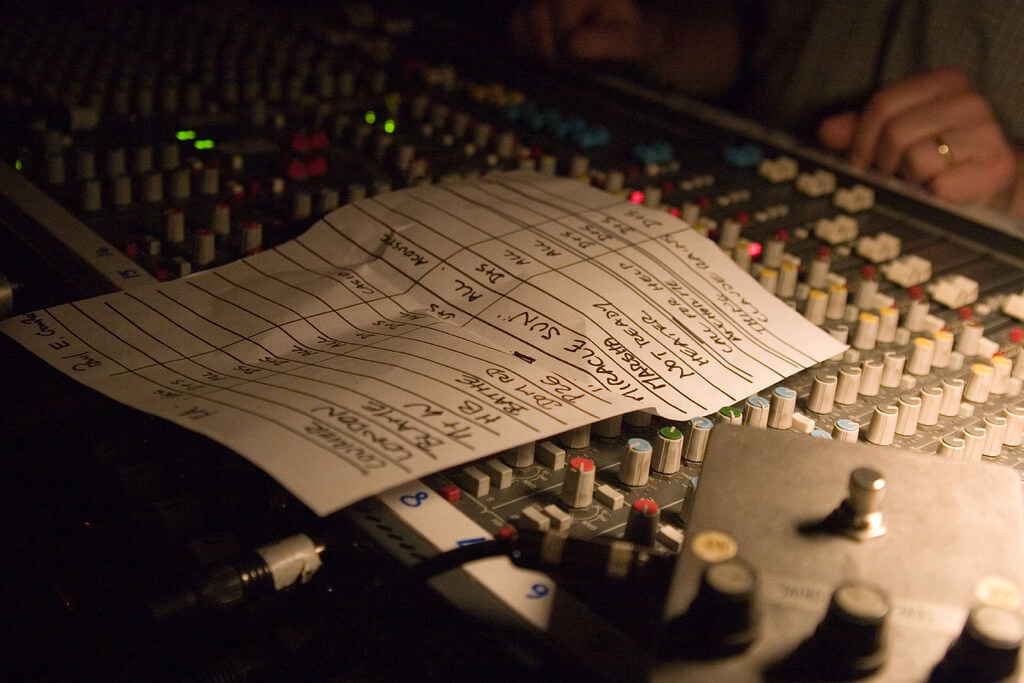How and why music services form playlists.
Music accompanies us all the time : in the gym, at the wheel, at work, at home, at breakfast, in the shower and on a walk. First there were cassettes (if you don’t dig deep), then round CD players, miniature mp3s, and now the era of smartphones has come [by the way, there are also portable Hi-Fi players ].
At one time, the flagship that carried music to the masses were radio stations. It was from the ethers that people learned new compositions, someone wrote them down directly from the receiver, someone was looking for them from collectors.
Later the Internet appeared, and it became much easier to search for music. Now, in the era of glut information (including music), when a person is bored with his own playlist, he turns to various services through which he searches for “jogging music”, “tracks for a perfect date” or “songs that are good to sing in soul. "
We would like to talk about how such collections are created in our article. Photo of Lachlan Tsang / CC

Apple Music service is the main source of licensed music for Apple owners. There are collected millions of tracks, including grouped by playlists: for example, soundtracks for films and TV shows, "Hot Hits", collections of "autumn music" and others.
Service management assures that the formation of a playlist is a process built on instincts and cannot be fully described. It is not enough one algorithms, and it is necessary to constantly wonder whether the track, which was chosen, for example, for training, will cause you to overcome pain and fatigue. Therefore, people creating playlists are becoming increasingly popular.
According to those who manage the process at the headquarters of Apple Music in California, the need for services that form playlists arose just when people got access to almost all the music in the world. In 2014, Tim Cook called the service team a group of very rare and valuable experts who are almost impossible to find.
Of course, in any streaming service such as Spotify or Google Play Music, you can find such collections as “Music for Running”, as well as tracks of any genre for any mood and activity. Such lists are created with two goals: to help users navigate through categories and “dilute” popular music tracks with compositions from lesser-known but good performers.
The algorithm for collecting music in a playlist is not as simple as it may seem at first glance. More precisely, this algorithm has not yet been invented, therefore veterans of the music industry and musical geeks are taking on work with playlists. In large companies, the number of such employees can reach hundreds - they are responsible for assembling, naming the playlist and updating it.

Photo of Lachlan Tsang / CC
Each of the playlists consists of a kind of “backbone”. It is based on the preferences of the target audience and usually consists of several examples of music tracks (for example, 50 songs are usually selected in Spotify).
The “backbone” of the playlist is being tested and subject to adjustment based on feedback received from the audience. If the playlist works inefficiently, its curator can change the cover or swap some songs, as well as remove the least popular songs from it.
Playlist curators use special tools to simplify the process. For example, a PUMA tracker (Playlist Usage Monitoring and Analysis), which distributes each song in a playlist according to parameters such as the number of plays, the number of skips and others. PUMA also collects data about users - age, geolocation, gender, listening time and others.
To assess the effectiveness of a playlist, special metrics can be used, called Song Score, which work on the same principle as PUMA - estimate the number of auditions, gaps and the number of likes / dislikes.
In addition to its main services for listening to music, Google has developed a service that selects a playlist with the music that matches the environment. For example, if you log in to such a "concierge" at 8 am, it will include a playlist for a good awakening.

Photo régine debatty / CC
Of course, everything is subjective in music. Anyone who stands, for example, behind a selection of the 25 best rock songs, can “not get” in the mood, taste or preferences of some listeners.
But still, using the example of the majority of large streaming services, we can conclude that playlists are collected by people who are very well versed in the genres, trends and characteristics of music, are good at using metrics and understand the target audience. Perhaps this is how playlists are created.
PS We, in turn, would like to offer you an unusual playlist consisting of the releases of our podcast “Sound”. In this program, we discuss audio equipment and a sound ecosystem :
At one time, the flagship that carried music to the masses were radio stations. It was from the ethers that people learned new compositions, someone wrote them down directly from the receiver, someone was looking for them from collectors.
Later the Internet appeared, and it became much easier to search for music. Now, in the era of glut information (including music), when a person is bored with his own playlist, he turns to various services through which he searches for “jogging music”, “tracks for a perfect date” or “songs that are good to sing in soul. "
We would like to talk about how such collections are created in our article. Photo of Lachlan Tsang / CC

Why do we need such services
Apple Music service is the main source of licensed music for Apple owners. There are collected millions of tracks, including grouped by playlists: for example, soundtracks for films and TV shows, "Hot Hits", collections of "autumn music" and others.
Service management assures that the formation of a playlist is a process built on instincts and cannot be fully described. It is not enough one algorithms, and it is necessary to constantly wonder whether the track, which was chosen, for example, for training, will cause you to overcome pain and fatigue. Therefore, people creating playlists are becoming increasingly popular.
According to those who manage the process at the headquarters of Apple Music in California, the need for services that form playlists arose just when people got access to almost all the music in the world. In 2014, Tim Cook called the service team a group of very rare and valuable experts who are almost impossible to find.
Of course, in any streaming service such as Spotify or Google Play Music, you can find such collections as “Music for Running”, as well as tracks of any genre for any mood and activity. Such lists are created with two goals: to help users navigate through categories and “dilute” popular music tracks with compositions from lesser-known but good performers.
The algorithm for collecting music in a playlist is not as simple as it may seem at first glance. More precisely, this algorithm has not yet been invented, therefore veterans of the music industry and musical geeks are taking on work with playlists. In large companies, the number of such employees can reach hundreds - they are responsible for assembling, naming the playlist and updating it.

Photo of Lachlan Tsang / CC
What is the process
Each of the playlists consists of a kind of “backbone”. It is based on the preferences of the target audience and usually consists of several examples of music tracks (for example, 50 songs are usually selected in Spotify).
The “backbone” of the playlist is being tested and subject to adjustment based on feedback received from the audience. If the playlist works inefficiently, its curator can change the cover or swap some songs, as well as remove the least popular songs from it.
Playlist curators use special tools to simplify the process. For example, a PUMA tracker (Playlist Usage Monitoring and Analysis), which distributes each song in a playlist according to parameters such as the number of plays, the number of skips and others. PUMA also collects data about users - age, geolocation, gender, listening time and others.
To assess the effectiveness of a playlist, special metrics can be used, called Song Score, which work on the same principle as PUMA - estimate the number of auditions, gaps and the number of likes / dislikes.
In addition to its main services for listening to music, Google has developed a service that selects a playlist with the music that matches the environment. For example, if you log in to such a "concierge" at 8 am, it will include a playlist for a good awakening.

Photo régine debatty / CC
Instead of conclusion
Of course, everything is subjective in music. Anyone who stands, for example, behind a selection of the 25 best rock songs, can “not get” in the mood, taste or preferences of some listeners.
But still, using the example of the majority of large streaming services, we can conclude that playlists are collected by people who are very well versed in the genres, trends and characteristics of music, are good at using metrics and understand the target audience. Perhaps this is how playlists are created.
PS We, in turn, would like to offer you an unusual playlist consisting of the releases of our podcast “Sound”. In this program, we discuss audio equipment and a sound ecosystem :
- [ read ] [ listen ] Why engineers are constantly improving the acoustics;
- [ read ] [ listen ] Old new vinyl: Its features and properties;
- [ read ] [ listen ] "Conservative sound": Talk Arslab and Penaudio;
- [ read ] [ listen ] "We look at home": We discuss technologies and formats;
- [ read ] [ listen ] "Sound shop": How to create sound design for the movie.
